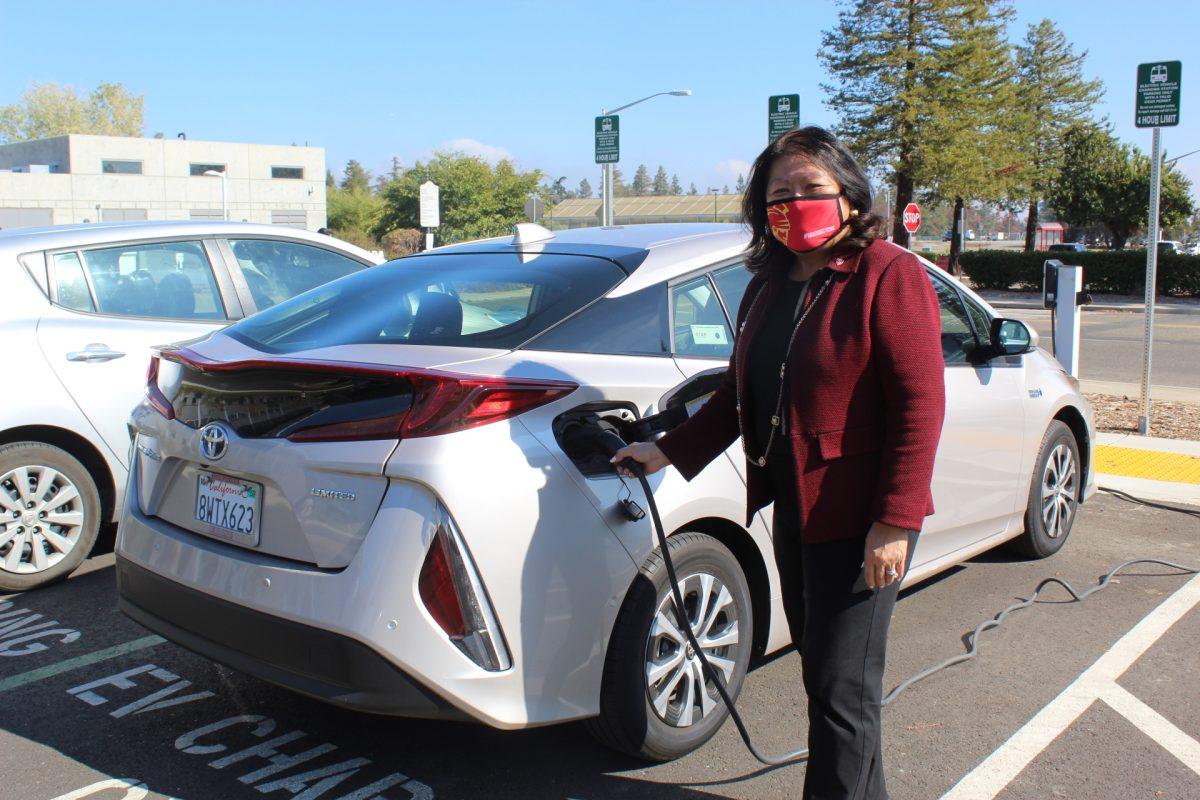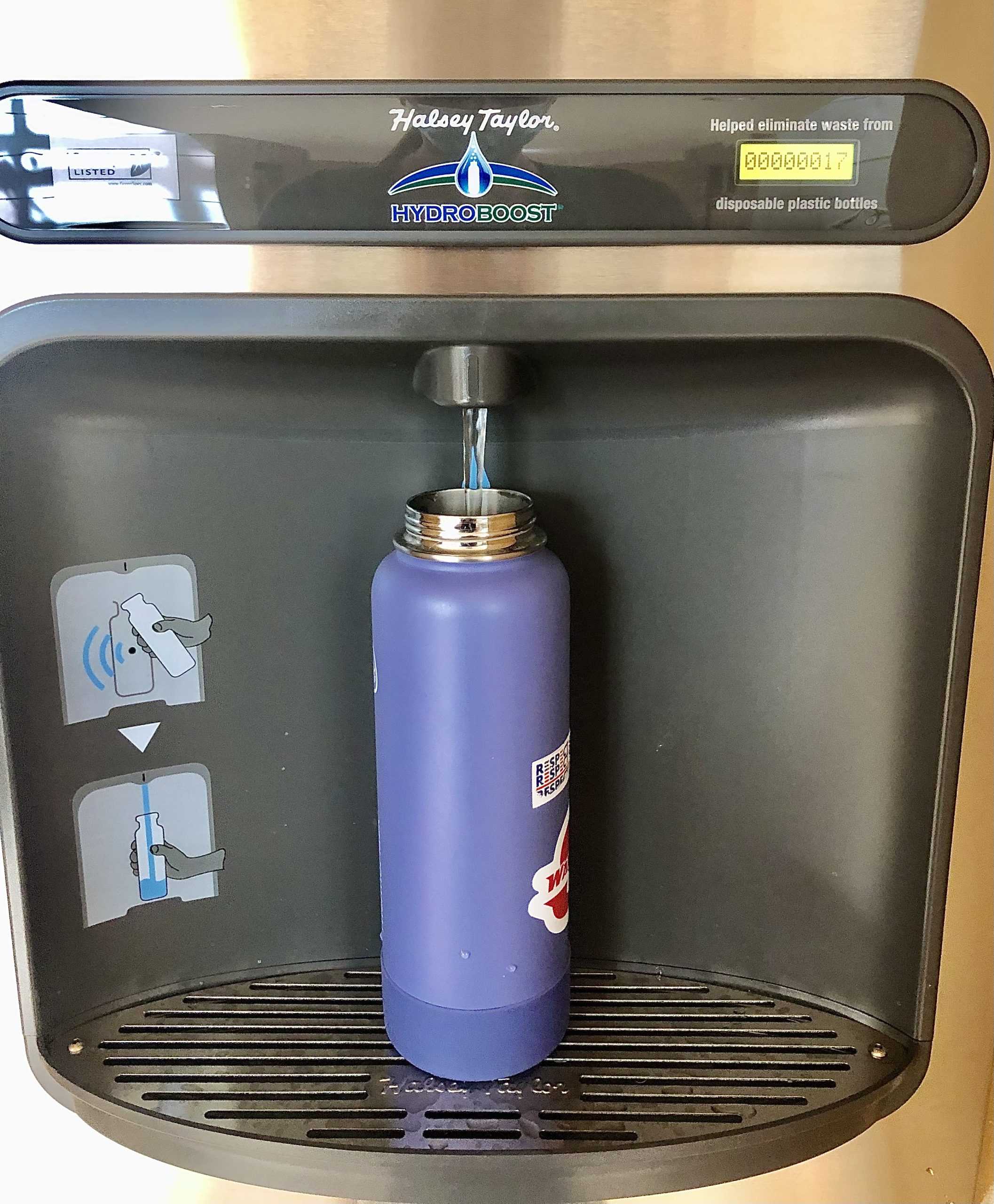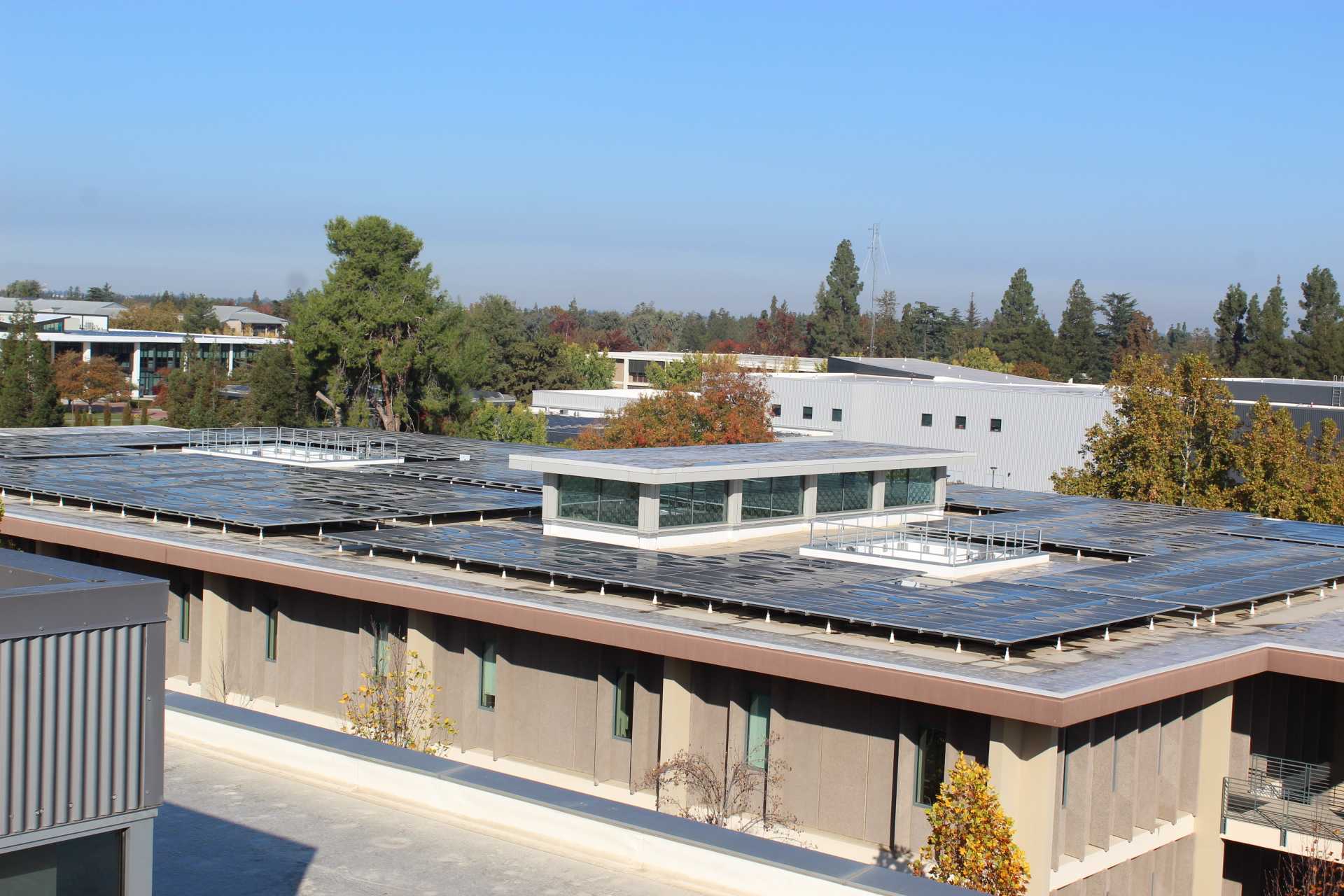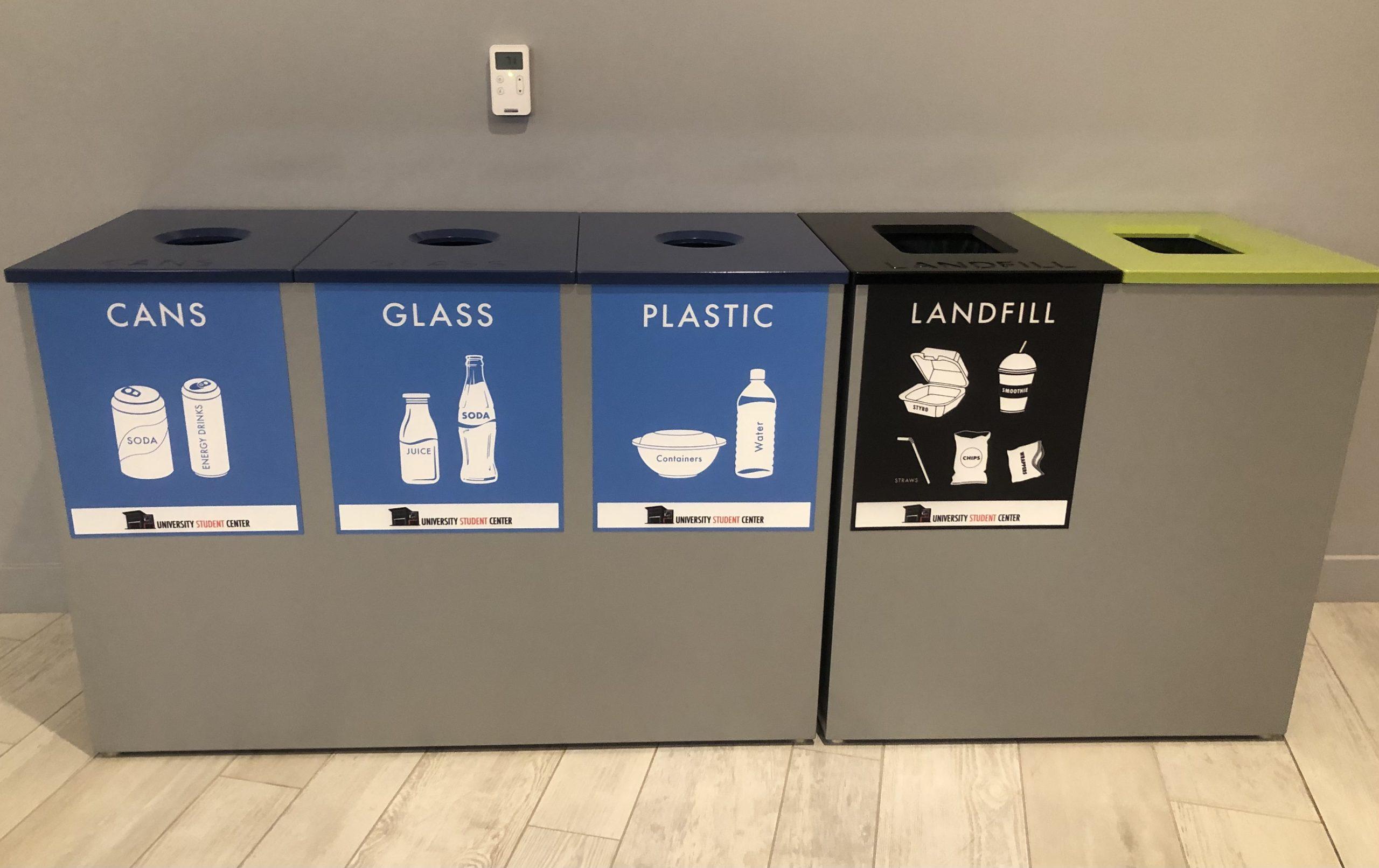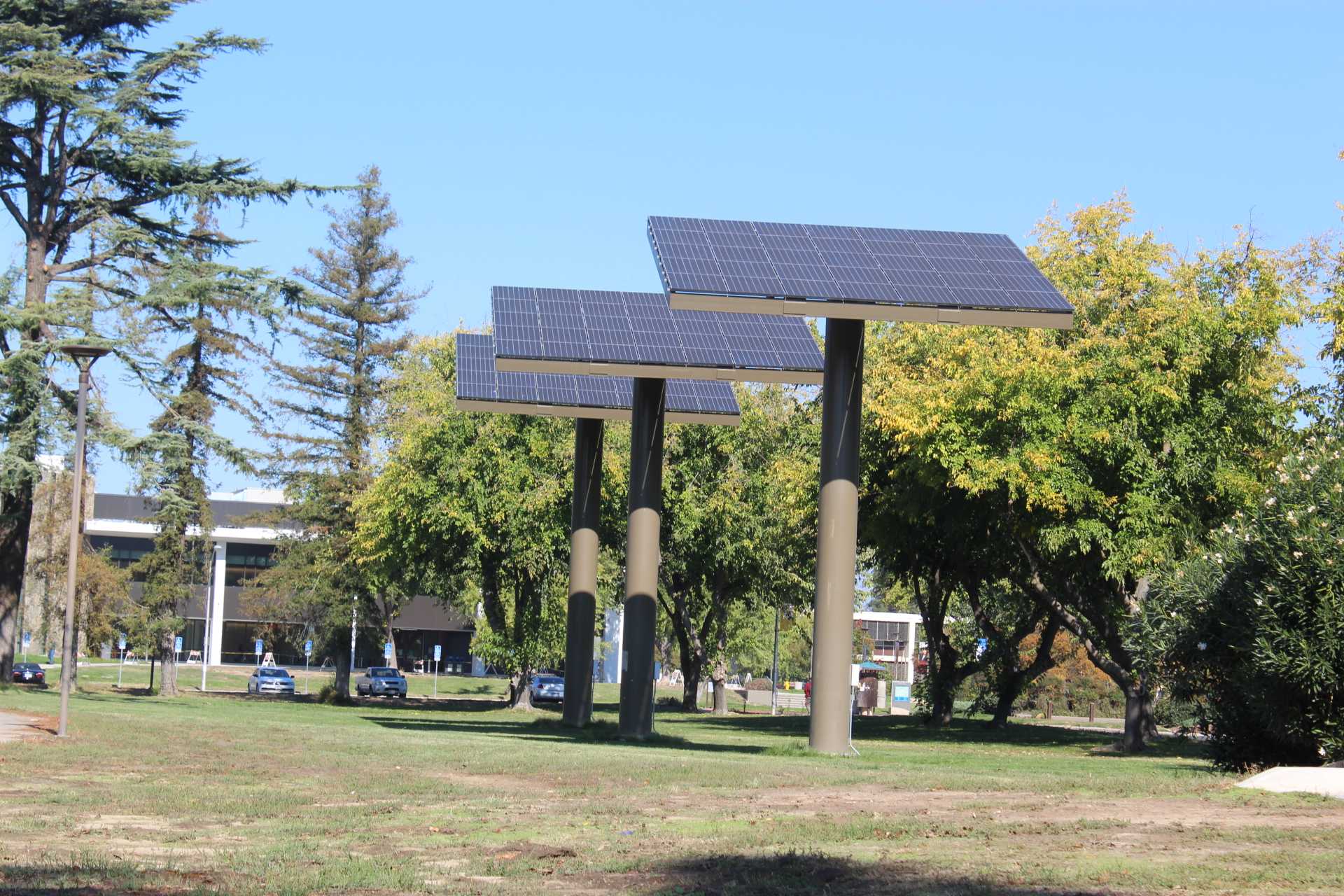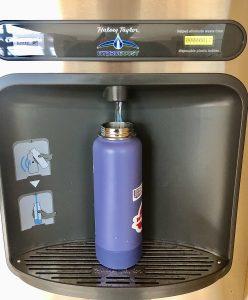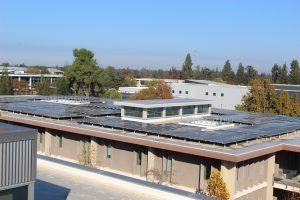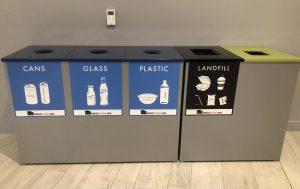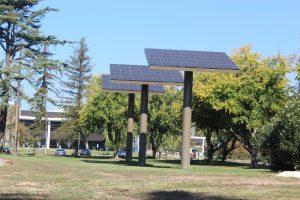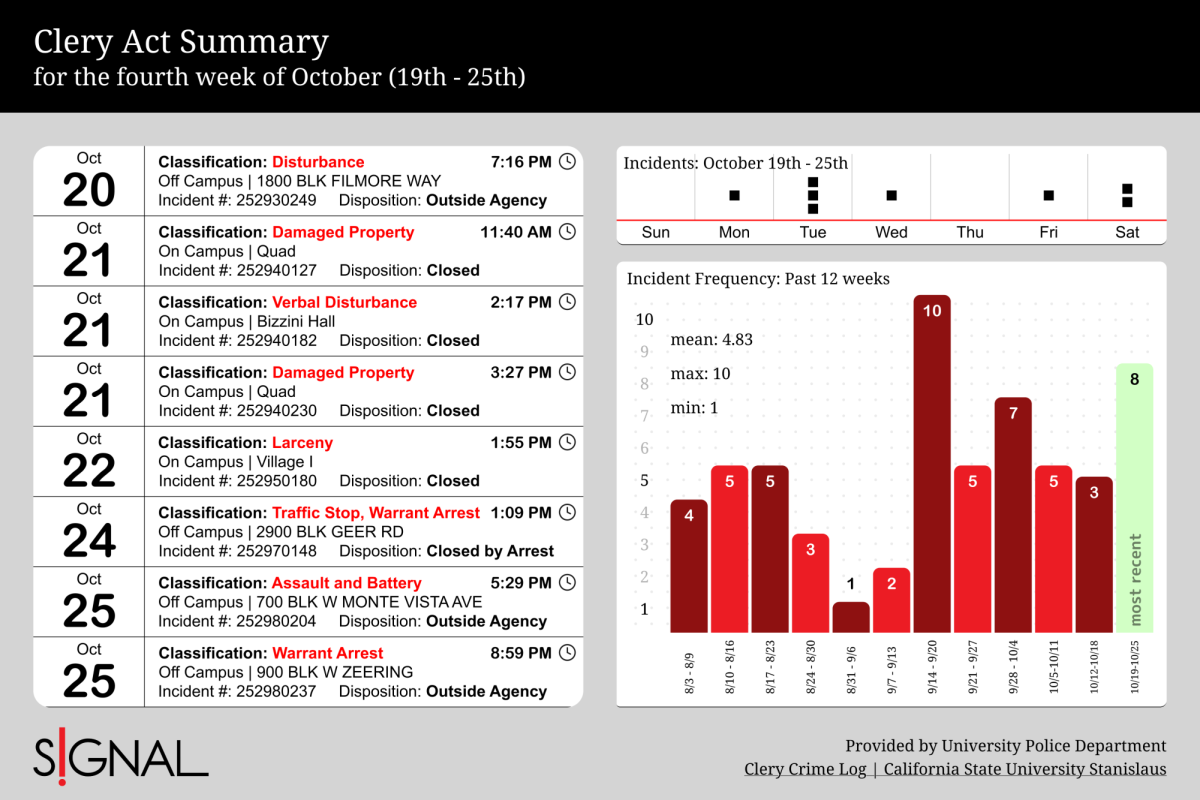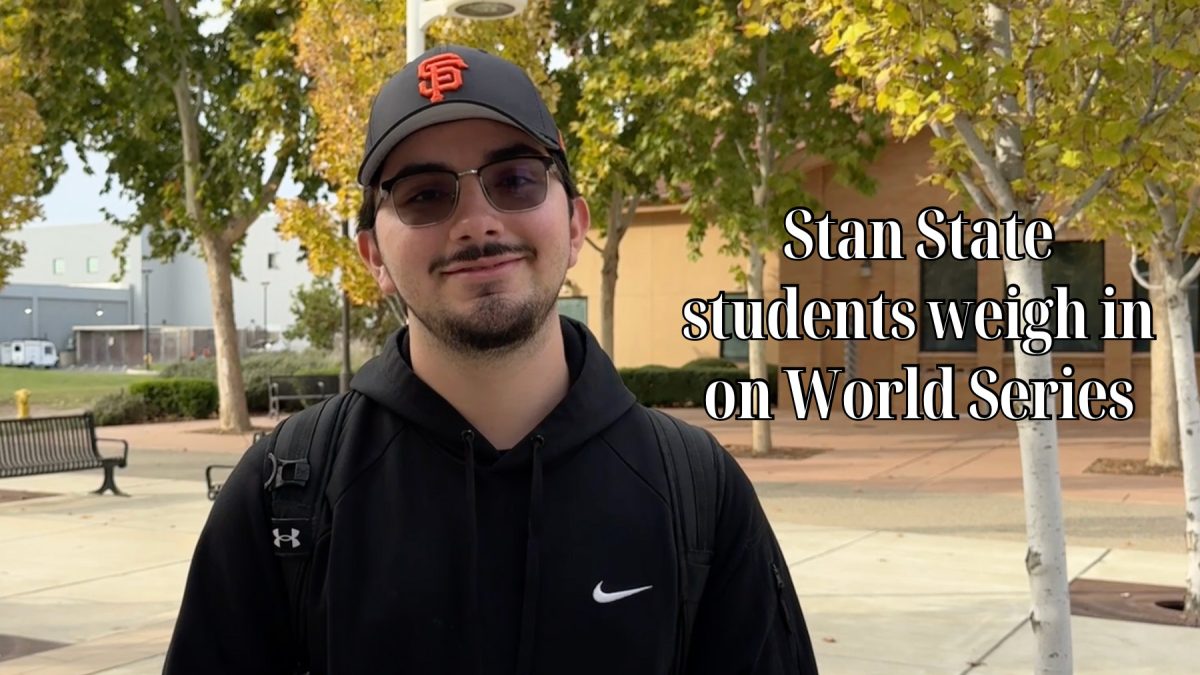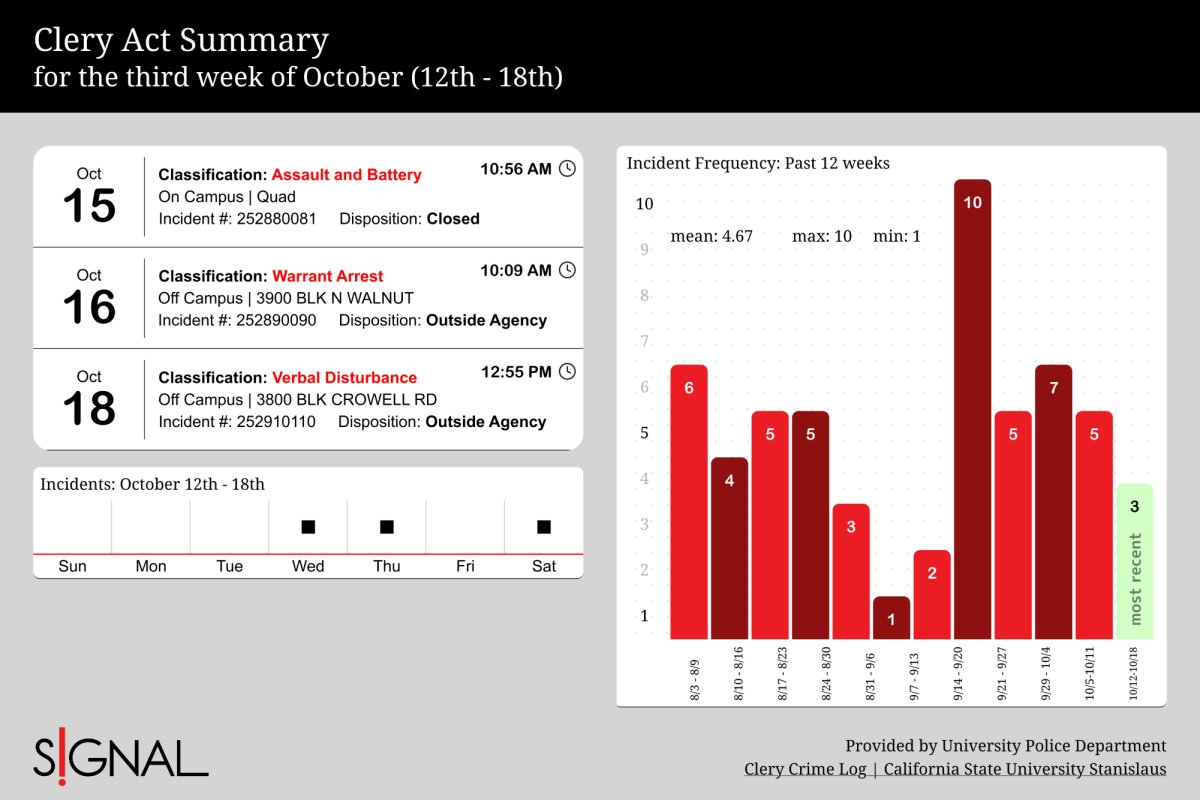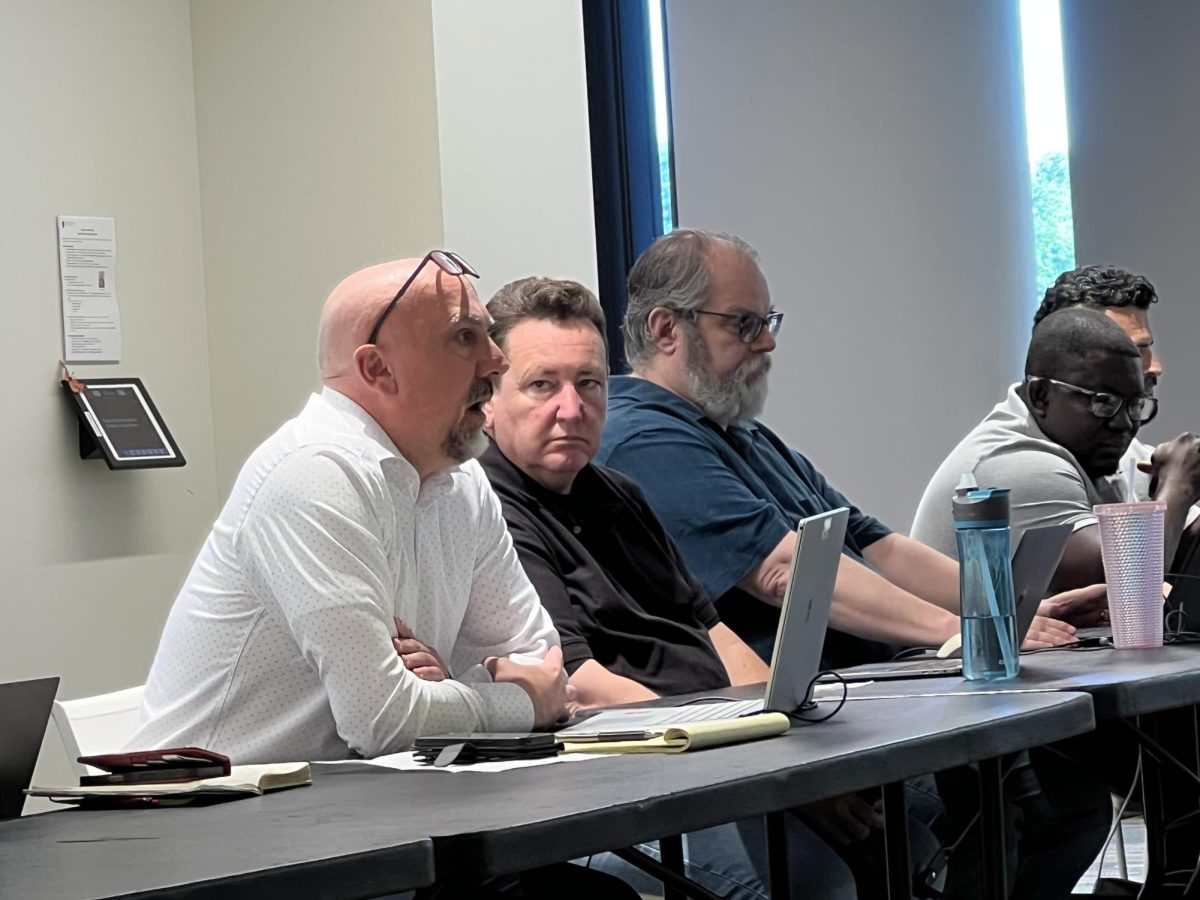This is part two of a series on sustainability issues at Stanislaus State: Part 1
Ellen Junn recently purchased a new Toyota Prius. While it’s not the first electric vehicle the Stanislaus State president has owned—she traded in an older Prius—this semester is the first time she’s had the opportunity to plug in to one of the new on-campus charging stations. Clean energy vehicle charging stations, like the one Junn and other electric vehicle owners can now use on campus, are just one aspect of ongoing efforts by Stan State to go green.
In addition to the ten new charging stations scattered throughout several campus parking lots, the university has implemented a number of other environmentally friendly features. Some of these include an energy management system and recycling program, LED lighting upgrades, water bottle refill stations, solar panels throughout the campus and an innovative water reclamation system.
“Together, with our physical plant, our campus provides a real-world training ground for environmental sustainability initiatives,” Junn said.
Structural Change You Can See
Solar arrays erected all over campus help power the university. The solar structures near the art building and the parking lot to the west of Demergasso-Bava Hall are noticeable to anyone coming on to campus, but unseen solar panels also dot the tops of some buildings, including the library, main dining buildings, and Science I and will soon span the roof of the new student center.
“Because we use these photovoltaic arrays, it actually gives us 12.7% of the campus’ energy supply,” Junn said.
That means the university has reduced its annual energy usage by 385 metric tons of carbon dioxide, which is enough to power 182 houses per year, she said.
Between 1991 and 2018, the university has reduced greenhouse gas emissions by 47% through a lengthy list of energy conservation initiatives. Some of these include swapping fluorescent lighting for LED, optimizing water and HVAC systems, shifting more than half of all fleet vehicles over to electric, and the careful scheduling of summer and winter intersession classes to allow for the shutdown of HVAC systems on buildings and zones during low-use or no-use periods. Food waste composting will also begin in the spring of 2022 to help reduce methane emissions.
“We’ve reduced energy consumption by almost a third, a 30% decrease in energy consumption, and that’s because of all of these energy management and more electronically monitored systems,” Junn said.
Cutting back on plastics and recycling is also helping Stan State be greener. The campus eliminated the use of plastic bags and straws in 2019 and will phase out the sale of plastic water bottles by 2023. Campus-wide external recycling bins are already in place at most buildings and will soon have internal E-waste, print cartridge and battery recycling stations, according to Junn.
In a major recycling success, the construction and demolition of the student center was almost entirely recycled, with 92 percent of the demolition materials diverted from the landfill or incinerator through recycling, donation or other forms of recovery.
“The students were very pleased to be able to do that, because it is their student center, and they were able to make sure that building a new one didn’t add more harm to the environment,” she said.
A Team Effort
The planning for new buildings, like the one that replaced the old student center and the recent library renovation, begins with Capital Planning & Facilities Management (CPFM). According to Julia Reynoso, Associate Vice President of the department, CPFM is tasked with the design, construction of projects, and are in charge of maintaining everything at optimal levels of operation.
“The team works together to ensure that design and construction of the buildings are done with long term goals to incorporate sustainable features from the beginning,” Reynoso said.
CPFM acts as a catalyst to get the conversation going with everyone who has a stake in a new project at the onset of planning, explained Reynoso.
“It’s a collaborative effort with the whole campus and whoever is going to occupy the building,” she said.
Sustainability responsibilities are scattered throughout the various areas within CPFM. That includes things like custodial services use of green certified products, the landscape and grounds team utilizing a minimal use water practice called xeriscaping in their mulching and recycling efforts, and the maintenance team making many interior and exterior LED lighting conversions.
The evidence of sustainable practices can be seen all over the campus, Reynoso said.
“It’s in our lightbulbs, it’s in the grass, it’s in our water features, it’s really just everywhere I look on campus,” she said. “And if we see somewhere else that looks like we’re going to be able to have an impact, we do it.”
CPFM is charged with taking care of the campus water supply as well, which is perhaps one of the most important sustainability features at Stan State. With the Central Plant, lakes and reflecting pond at the heart of its water reclamation system, the university has been able to reduce potable water use by 41 percent in the last seven years by recapturing water from the campus irrigation system and storm water run-off from all areas of campus, and using it to cool buildings and irrigate the campus grounds.
Students Passionate about Sustainability
Cynella Aghasi (senior, Political Science) ran her campaign for ASI president on sustainability and has been trying to bring awareness to campus since long before her role in student government.
“For me it was about making sure there was a sustainability presence on campus,” she said.
Noticing early on that other CSU’s had a strong showing of support for sustainably through student clubs and organizations, Aghasi wanted to help students at Stan State get more involved too.
“I didn’t see that at Stanislaus and that was kind of disappointing since we’re at the heart of agriculture here,” Aghasi said, “so I think it was very important to me to see that here.”
Aghasi helped bring the Eco-Warriors Club to Stan State, a student run organization that brings sustainability and conservation awareness to campus. She said it’s important that the university spreads awareness to incoming students to make it known that Stan State is about sustainability.
“They should know, at this campus, we recycle, we want to have compost stations, students care about those things,” she said.
Aghasi explained that ASI recently coordinated a social media campaign to poll students on the sustainability issues that were important to them. Among the polling topics were E-waste recycling, composting, general recycling and clothing swaps.
“One of the top answers was students wanting to see clothing swaps,” she said. “The idea is to bring your gently used clothing to campus to switch it to something else available or you could just donate it to charity and give some to the career closet on campus.”
Aghasi said ASI plans to take all of the information learned from their social media campaign into the spring semester during planned Earth Month events. In the future, she hopes that the implementation of sustainability programs and events on campus will be tackled by the university as a whole.
“I really want to see the university take action and say ‘we take this seriously’ and put on the events and put on those campaigns and spread that information to the larger community and get everyone involved,” she said.
ASI is currently looking for a new Sustainability Coordinator, which is an opportunity for a student to not only participate in campus government, but also to help continue to build on the momentum of ASI’s sustainability efforts, Aghasi said. Interested students may apply through this link.
Campus maps with the locations of water refill stations, LED lighting additions, solar panels, and electric vehicle charging stations can be found here.

